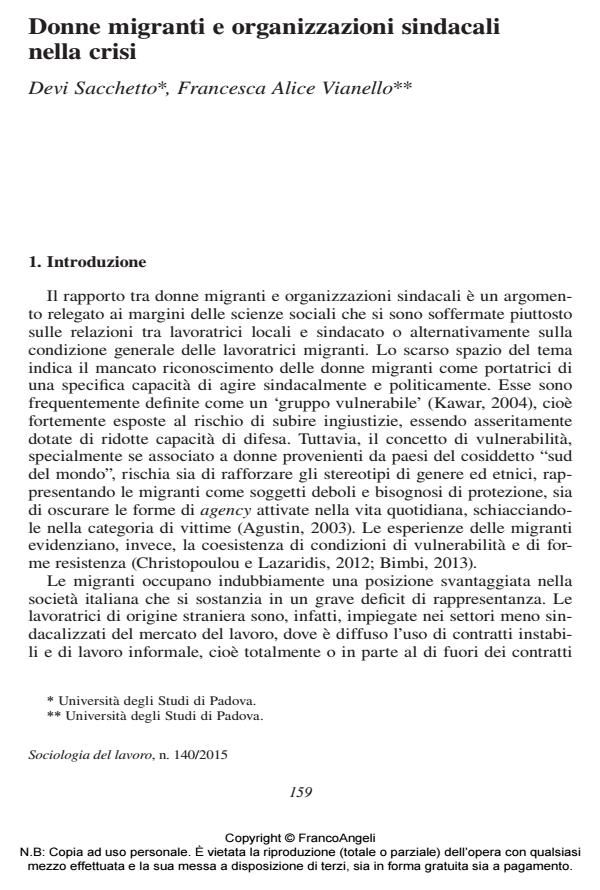Migrant women and trade unions in the crisis
Journal title SOCIOLOGIA DEL LAVORO
Author/s Devi Sacchetto, Francesca Alice Vianello
Publishing Year 2015 Issue 2015/140
Language Italian Pages 14 P. 159-172 File size 104 KB
DOI 10.3280/SL2015-140011
DOI is like a bar code for intellectual property: to have more infomation
click here
Below, you can see the article first page
If you want to buy this article in PDF format, you can do it, following the instructions to buy download credits

FrancoAngeli is member of Publishers International Linking Association, Inc (PILA), a not-for-profit association which run the CrossRef service enabling links to and from online scholarly content.
The low unionization of migrant women is frequently explained with their weak condition in the labour market. Nevertheless, migrant women’s experiences highlight the coexistence of conditions of vulnerability and forms of resistance. This paper analyses the ways in which migrant women have faced the economic crisis and labour disputes, underlining the relationship between workers and trade unions in and out of the workplaces. The article considers the experiences of two groups of women holding distinct positions in the Italian labour market: Moroccan and Romanian women. The authors argue that the low rate of unionisation of migrant women is not related to their alleged docility but both to the trade union inability to respond to women who apply for assistance to the union locals, and to the migrant women’s habit of facing individually the conflicts and challenges arising in their workplaces.
Keywords: Migrant women, trade union, economic crisis
Devi Sacchetto, Francesca Alice Vianello, Donne migranti e organizzazioni sindacali nella crisi in "SOCIOLOGIA DEL LAVORO " 140/2015, pp 159-172, DOI: 10.3280/SL2015-140011